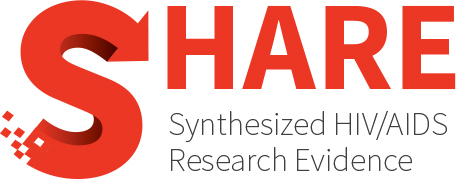Category Archives: Prevention, Engagement and Care Cascade
Comparative efficacy and safety of treatment regimens for Pneumocystis jirovecii pneumonia in people living with HIV: A systematic review and network meta-analysis of randomized controlled trials
BACKGROUND: Pneumocystis jirovecii pneumonia (PCP) is a serious opportunistic infection in people living with HIV (PWH) who have low CD4 counts. Despite its side effects, trimethoprim-sulfamethoxazole (TMP-SMX) is currently considered...
Onset and predictors of first-line antiretroviral therapy treatment failure among children in Ethiopia: A systematic review and meta-analysis
Introduction: The emergence of First-line Antiretroviral Therapy (ART) regimens fails; it necessitates the use of more costly and less tolerable second-line medications. Therefore, it is crucial to identify and address factors...
Unintended pregnancy among women living with HIV and its predictors in East Africa, 2024. A systematic review and meta-analysis
INTRODUCTION: An unintended pregnancy refers to a situation where a pregnancy occurs either when there is no desire for a child (unwanted) or when it takes place at a time...
Barriers to PrEP use and adherence among adolescent girls and young women in Eastern, Southern, and Western Africa: A scoping review
BACKGROUND: Adolescent girls and young women (AGYW) are disproportionately affected by HIV. Globally, in 2022, an estimated 4000 AGYW 15–24 were newly infected with HIV weekly, and nearly 78% of...
Prevalence, predictors, and outcomes of HIV care in HIV-positive clients entering HIV care with advanced HIV disease in sub-Saharan Africa 2010–2022: Systematic review and meta-analysis
Background and aims: Sub-Saharan Africa drives global HIV-related mortality, and patients continuously present with advanced HIV disease (AHD) at diagnosis. We describe prevalence, predictors, and treatment outcomes in HIV clients with...
Adverse birth outcome research case definitions associated with maternal HIV and antiretroviral drug use in pregnancy: A scoping review
Introduction: The global antiretroviral therapy era has led to a decline in the number of children newly acquiring HIV and an increase in the number of children who are HIV-exposed and...
Understanding human papillomavirus vaccine response and efficacy in people living with HIV: A systematic mixed studies review and meta-analysis
Coinfection with human papillomavirus (HPV) and HIV compounds the risks of developing cervical, anal, and HPV-associated oral neoplasia. Safe prophylactic vaccines are available to prevent HPV infections in people with...
Caring for a young child who is HIV exposed and whose HIV status is not yet known: A scoping review of mothers’ experiences
Living with HIV can affect mothers’ wellbeing, functioning, and experiences of caregiving. Most research about caregiving in the context of HIV comes from studies of dyads where both mother and...
Clinical events associated with poor CD4(+) T-cell recovery in people living with HIV following ART: A systematic review and meta-analysis
Background: Antiretroviral therapy (ART) has significantly improved outcomes for people living with HIV (PLWH), but poor CD4+ T-cell recovery remains a challenge. This study aimed to evaluate the relationship between poor CD4+ T-cell...
The impact of the National Syphilis Prevention Program on the prevalence of syphilis among people living with HIV in China: A systematic review and meta-analysis
Introduction: In 2010, China launched the 10-year National Syphilis Prevention and Control Program to curb the spread of syphilis by integrating syphilis screening and treatment with HIV services. Herein, we aimed...
Enhancing HIV cognitive abilities and self-management through information technology-assisted interventions: Scoping review
BACKGROUND: HIV/AIDS remains a significant global challenge, and with the rapid advancement of technology, there has been an increasing number of interventions aimed at improving HIV/AIDS cognition and self-management behaviors...
Peer-led adjunctive interventions for increasing the reach of HIV prevention and care interventions to Latino/x/e men who have sex with men: A scoping review
PURPOSE OF REVIEW: Latino/x/e men who have sex with men (LMSM) in the United States are disproportionately affected by HIV. Peer-led adjunctive interventions show promise for enhancing engagement in HIV...
